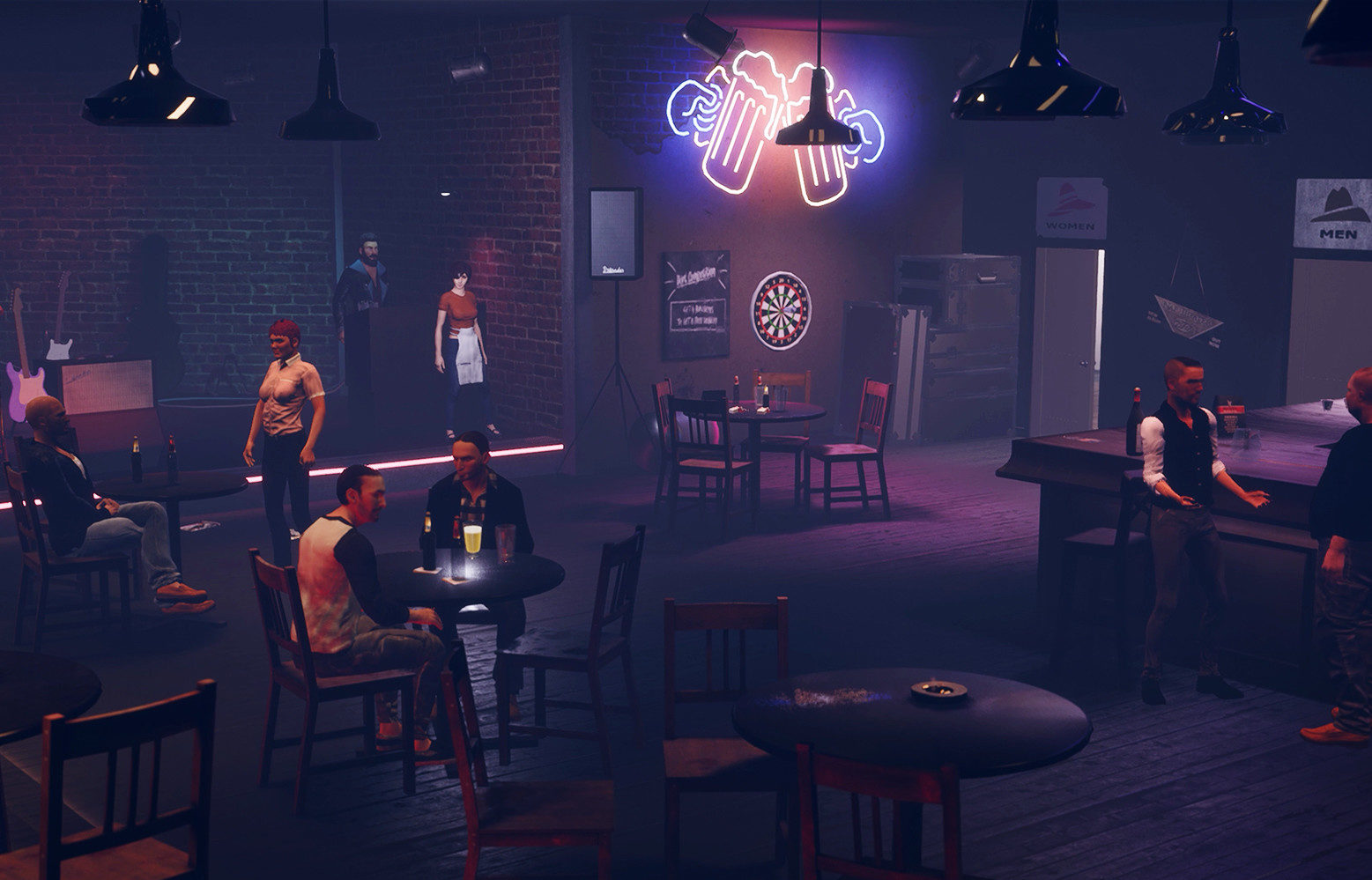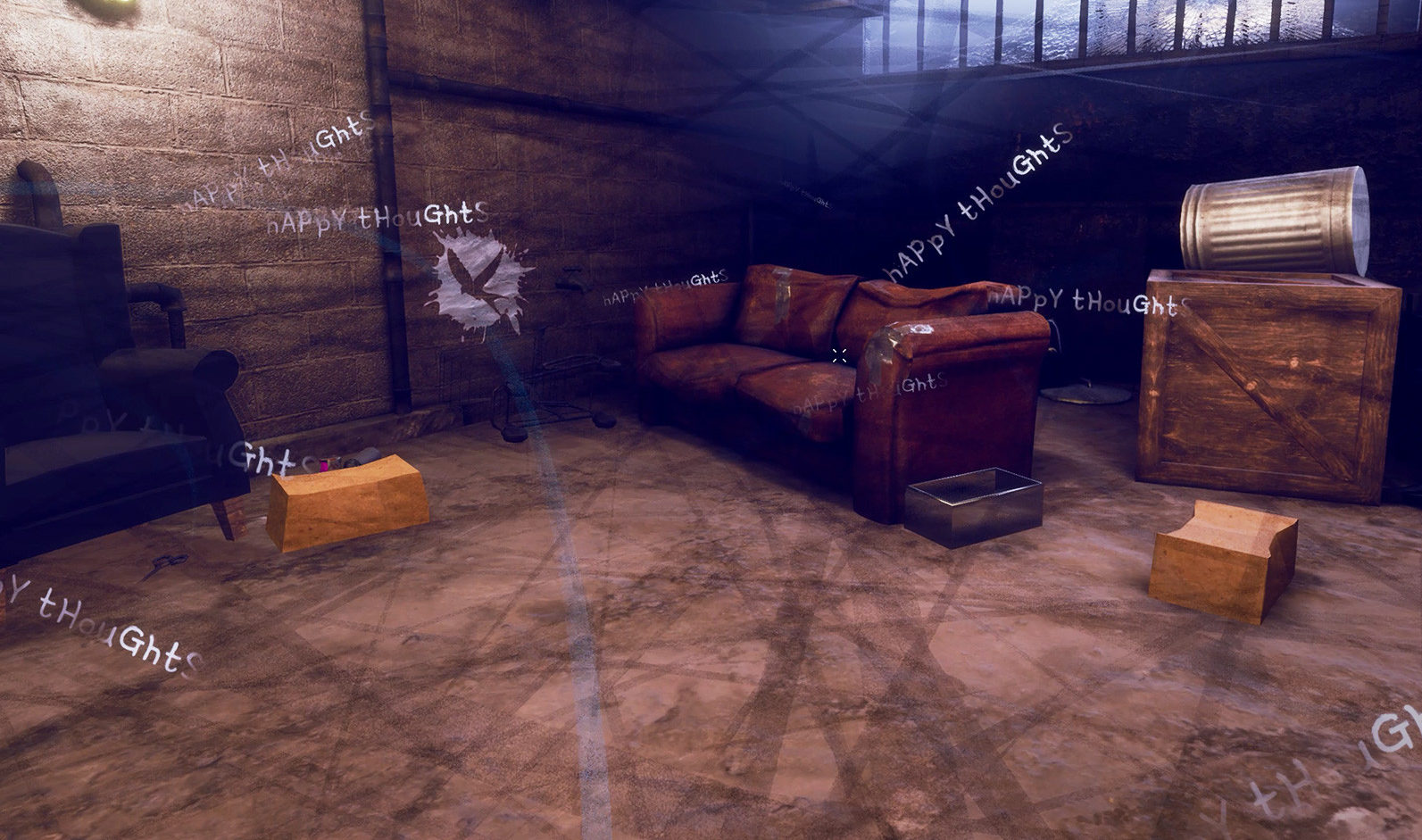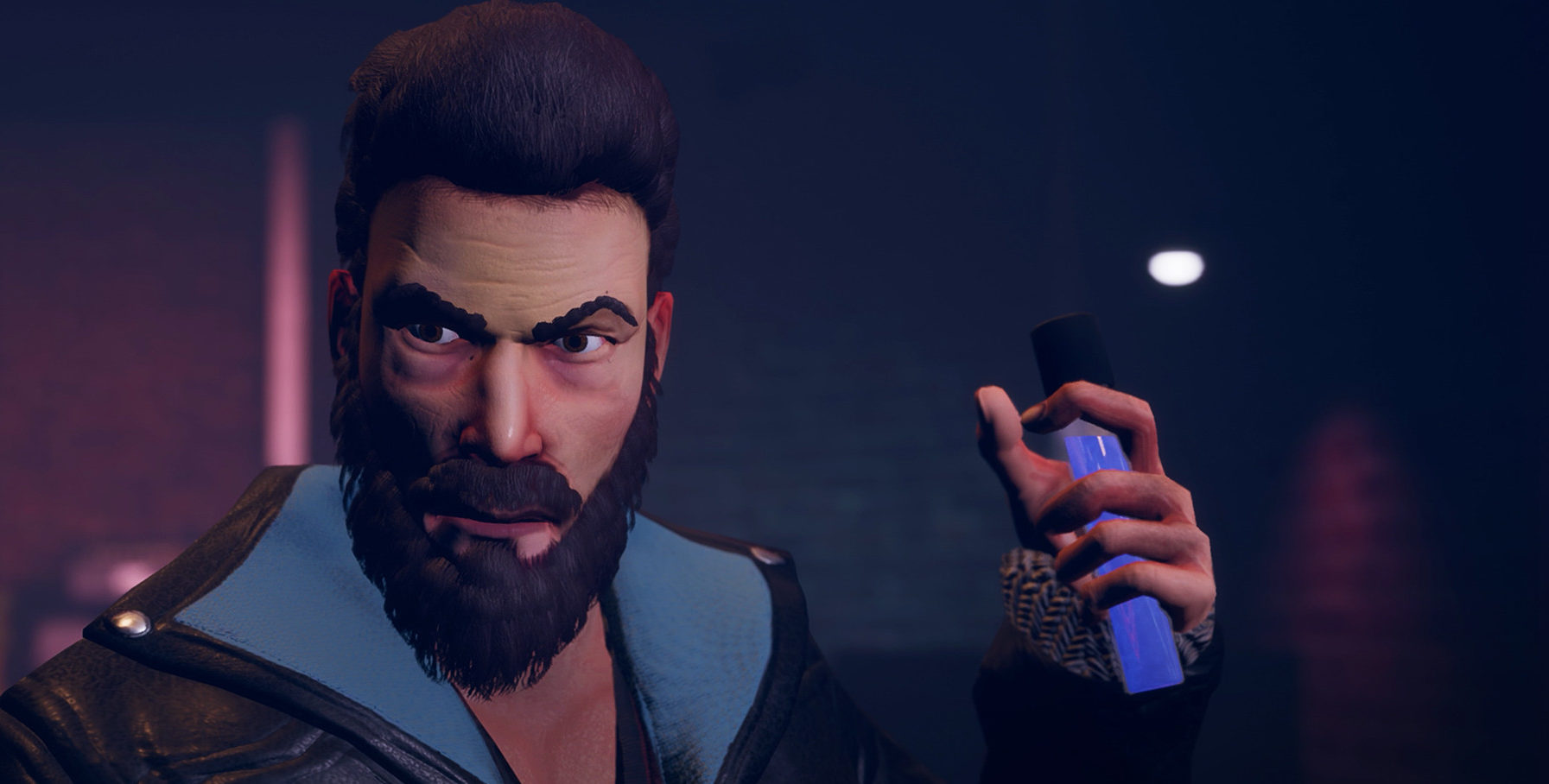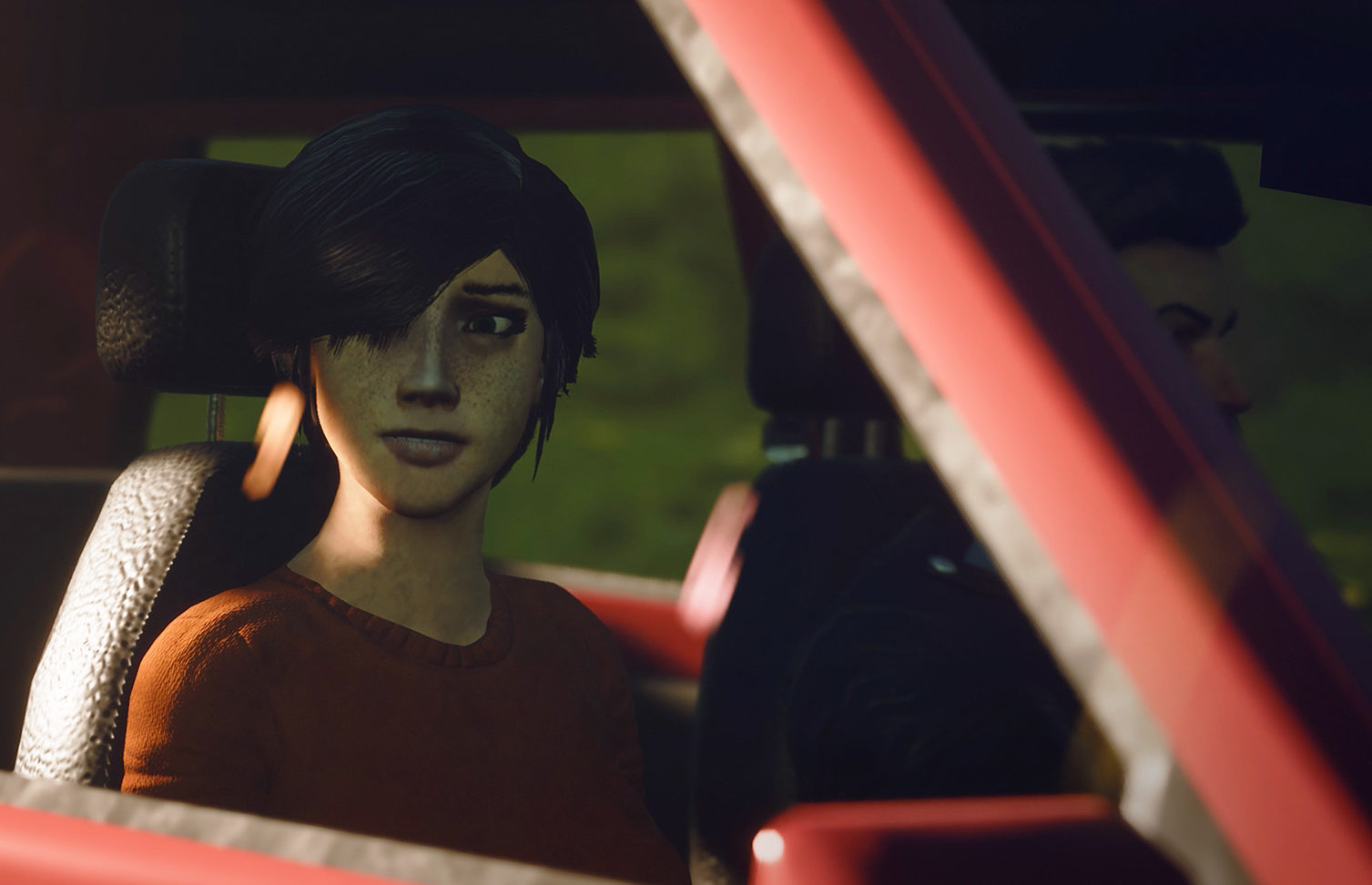Platform:
PC
Released:
May 20, 2021
Publisher:
All in! Games
Developer:
Capricia Productions
Indie games are a great place to innovate in interesting ways. The door is open to new gameplay models and ideas. The door is also open to creatives of all kinds to carve out their own place within the scene. With this ideology in mind, Of Bird and Cage sets off with some ambition to craft an interactive metal music video experience. As a music video, it’s fantastic. As a game, let’s just say it’s quite a nosedive.
I like how the caged bird sings
A game where the music and the narrative are both equally dominant forces is not a terribly common occurrence. In the case of Of Bird and Cage, the game looks to present a two-hour-long tale of violence and trauma with an accompanying “symphonic metal” soundtrack. It’s a curated music album presented through a narrative game experience and it’s no doubt a unique idea.
Whilst I’m not well-versed in the symphonic metal genre, I can see how the music and its mythic folk tale-like lyrics can help epitomise anguish, which fits this narrative perfectly. Regardless of my lack of expertise, I am definitely a fan of this tracklist. At worst, it’s a good backing ambience for the scenes At best, it’s a real triumph. It can help bring characters to life, it can help gear you up for fight or flight, it’s really everything you need for the game. The music in this game is truly a dominant force to be reckoned with. The game has clearly been designed really well around this setlist. I’ll say straight up if the goal was to just sell music, it totally succeeds. I will definitely be listening to these songs well after this review is published. But does the video game aspect equally succeed on its own merits? Not so much. As an interactive vehicle for music, this is a slam dunk. Unfortunately, I am a game critic, this is a game, and it is in dire need of some critiquing.
Failure to launch
The narrative focus for Of Bird and Cage is that of a tortured female protagonist. A victim of past and present abuse, working a dead-end job to support her crippling drug addiction, assuming she isn’t asked to pay with “alternative means”. If at any point I sound dismissive to the plight of this young lady, know that it’s merely a reciprocation of how her story is handled in-game. It feels at times like the game itself sees this all as set dressing. It wasn’t until the second run that I actually committed the name of our protagonist, Gitta, to memory. Honestly, I just assumed that the name would, I don’t know, come up every now and then? In this game little things like the character’s actual identity are immaterial. Rather they serve their purpose as props to move around the scenes.
It doesn’t help that the starting levels set a bad first impression. The prologue itself is actually quite good. It’s a short little memory of Gitta’s parent’s abusive relationship. It introduces all the main concepts organically: how to move, how to look around, the timer that marks out scenes, and a basic quick time event example. It does a good job of quickly bringing you up to speed.

Immediately following the prologue is the first level of the game proper. The majority of this first level, for some reason, is yet another tutorial. The prologue did such a good job teaching things, so this feels like a big step backward. The idea that they couldn’t have just made the prologue tutorial more comprehensive is beyond me. Why even have this early scene that’s so important to the story if the devs don’t think the players even know how to play yet? In order to teach the player further information, the game doesn’t set a time limit. This may sound good in theory, but it’s a wild departure from the music video game that it’s supposed to be. The game feels paranoid that some players will be left in the dust and ends up doing more damage trying to remedy it.
The voice acting that is only used for a few lines of dialogue is not exactly great either. There are a lot of issues here that span the whole game, but putting them front and centre in the first scene with nothing to distract just highlights them. Not a good start. That’s not to say that the tutorial has no value, it does teach a few new things. We get a bit more detail on mechanics but the main addition is a bit of a tasteless one.
Some of the game’s big issues stem from a certain aesthetic desire. Metal music is a genre of almost mythic anger. When Disturbed sings, they are “stricken”, not “a little annoyed”. Of Bird and Cage then tries to justify a similarly exaggerated emotional response. In-game, this leads to what I’ve resolved to call “emotional tableaus”. Scenes will be set up, the character’s emotions will turn on a dime, and surreal imagery will be used and abused to maximise the emotional impact. Sometimes this technique works decently. A character recalling a past trauma long repressed, and falling down an endless hole with various objects of importance to her story, before landing in a locked birdcage? Sure, a bit cheesy, but with that backing music, it’s hard to be resentful. I fully expect others to see fantastic set pieces where I see some cliché visual shorthand. I will however stand up and say that it is used at times to painfully oversimplify. I am talking about manipulating characters, and circumstances, for extra drama points. I am talking about mental health, not as a concept to explore or understand, but to utilise.
So let’s discuss that one new mechanic in the tutorial. Gitta is very much painted with the mental illness brush. When she steps onto the scene of the tutorial level, she is hallucinating that things are on fire. The game assures us that this is something to deal with by taking an in-universe drug. Oh, and before you ask, no it’s not over-the-counter, we’re talking illicit drugs. Gitta gets the drugs in secret from “her dealer” or by sleeping with her “boyfriend” in his penthouse. It’s a bit of a bad look. The protagonist is opening a big vial and taking a swig of fantasy drugs. It’s a tasteless mechanic and one that speaks to a really stupid set of ideas in play.

Whilst the game deals with issues of mental health, the actual mechanic in question is probably best described as a “sanity” meter, ripped straight out of a Lovecraft-inspired game. Holding onto your sanity is hard because events such as being attacked or chased will instantly plummet you into full hallucinations. Even stranger is that sanity is tied to unrelated aspects. Do a “bad thing” like stealing or getting drunk and it drives sanity down. Fail a task or get hurt and that drops sanity too. Sure, physical pain isn’t great for mental wellbeing, but I don’t start hallucinating if I stub my toe, it’s still a non-sequitur. Conversely, the hallucinations don’t really affect gameplay. They will randomly glitch in some startle frames, but they are more annoying than scary. Truth be told, if I did decide to take the drugs (or reach for a bird, because that also helps sanity for no established reason), it was more because all the extra hallucination stuff was making it hard to see.
“It’s not about the oppression of women, it’s about oppression… The game doesn’t stand for anything of value.”
I can’t help but feel the game totally misses the mark when it comes to the depiction of so many things. Another prime example would have to be that of gender. There are three women that come to mind as characters within the game that aren’t merely extras. Of those three characters, Gitta, our protagonist, is the only one who sticks around long enough to not be a mere character motivation. Even in-game, Gitta pontificates about how she is surrounded by violent, controlling men. Whilst I think pursuing conversations about male violence against women is important, once again, the game depicts the issue in emotional tableaus. There is no real conversation about violence. Violence is just a thing here. Women being killed is just a thing here. The conversation mostly just hovers on Gitta thinking forlornly about her circumstance. It’s not about the oppression of women, it’s about oppression. One could argue that just focussing on oppression rather than a specific type of oppression gives broad relatability, but it also means it doesn’t stand for anything specific. The game doesn’t stand for anything of value.
When it comes down to it, the whole first chunk of the game is a focus on how bad the protagonist has it. Gitta wakes up next to drug dealers and must escape from them. She has worked under and for terrible people and gets fired. She is forced into living with her abusive father and decides to leave. She gets kidnapped and holed up in someone’s basement. That might seem like a rough life, but you’d be wrong. It’s literally a rough 24 hours. We can argue about how realistic Gitta’s life may be, but it’s hard to not see this as a bit of a ridiculous setup. This could all be forgiven if we saw how this all happened, how the bright flame of passion was repeatedly dulled by the chilling winds of an uncaring world. Instead, all context simply circles back to the parents fighting. The game ends strong enough to get you fired up, but whether that wallpapers over the cracks throughout is in the eye of the beholder. Note that this game does have multiple endings, seemingly the main way to give consequence to the player’s action. I played twice, and both endings filled me with a mix of confusion and frustration.
Gameplay: the ugly duckling
Of Bird and Cage is a music video first and foremost, so gameplay is a bit of an afterthought. On the simplest level, Of Bird and Cage cribs a bit from the Telltale model. Dialogue choices are timed to keep the plot moving, and this limit forces some snap decisions that can have later repercussions. The other side of this is the use of quick time events, which are a bit less welcome. In a similar way, it adds a little gravity and drama to getting stuff done. A little speed hump in places to make you earn your steps forward. However, in a game with little in the way of mechanically interesting ideas, QTEs don’t feel like a satisfying main course. This is where the little puzzle sections conceptually do a great job in filling in some gaps, but, unfortunately, they also don’t stick the landing.
Before we fully get into the details of Of Bird and Cage’s more interesting issues, it would be good to take a, shall we say, birds-eye view. For all scenes in this game (excluding the tutorial section), the gameplay follows the song played over it. There will be a timer running down during the gameplay, generally portioning out part of a song. It might be a line or two that a character sings, it may be a verse, it may be the entire song. Most sections provide a general objective such as “Escape”. Others won’t even give you that much. Some sections will have subtasks that you can discover, though mileage may vary on these. In one case, I couldn’t do anything until I powered things up. I still have no idea how to turn the power on. Well, except that the power is turned on in a later scene and you can return to that task. So this is either a baffling test of patience or a weird oversight or a glitch? I don’t know, but if intentional, it’s an odd choice. At the end of the section, you may have an evaluation that will move you down the narrative forks in the road, based on choices made, but not, as I had thought, by the results of certain events.
A lot of the gameplay sections are walking simulation. Some walking sim sections become very basic puzzles, some are a bit of an aimless walk around until the next section triggers. The best-case scenario for this gameplay is the chase sequence. The integration is done well here, hard drum beats may be synced to objects blowing up or bursting into flames, which adds to the tension. Granted this is still mostly walking simulation with a bit more cardio. I suppose fear plays well into the metal soundtrack representing the villain. Of Bird and Cage does have some interesting mechanics up its sleeve.
I want to float this gameplay concept to you, we’ll call it the “narrative skill test”. Consider the humble quick time event, and how it has evolved over the years. The QTE has become akin to a Dungeons and Dragons skill check. Characters may live and die by a single timed button press. Now, what if that was expanded into a whole scene? What if a well-fought gunfight or a stealthy escape could determine a character’s narrative course? It would add more weight to a scene, rather than a game over screen. It would test something more worthwhile than reaction time. That’s what Of Bird and Cage attempts to present.
These narrative skill tests come in a couple of different flavours. We’ll talk about puzzles soon, but there are many other little mechanics brought to the table. Combat is probably the most frequent mechanic, behind the first-person puzzles. However, it also illustrates two notable drawbacks to this game’s approach to gameplay.
“This is a team that can do some cool things with music, but they don’t succeed at a grab bag of game mechanics.”
The first issue is that the combat is clearly not polished. This is true of a lot of the add-on mechanics of this game. Particularly in the final act, many of the sections are punch-ups. It’s very basic, left mouse to punch, right mouse to block. There isn’t exactly a lot of room for finesse here. Once again, I recall the sentiment of this being a music video first and a video game distant second. The violence may add a new colour to the artist’s palette, although the fighting is really unsatisfying. This also could be applied to other minor mechanics. Platforming is either a floaty mess of overshooting and undershooting, with certain obstacles strangely insurmountable or oddly slippery. Good luck if you’re trying to shoot at someone. Half the time it misses for no clear reason, and it takes multiple direct hits to put someone on the ground. Bonus points for your ammo being monitored across scenes, leading to a climactic gunfight in which I had no bullets to contribute to the sequence. All summed up, Of Bird and Cage’s developers are taking mechanics from half a dozen or so genres. Sure, it’s cool to have variety, but the simple fact of the matter is a lot of genres require different types of polish. This is a team that can do some cool things with music, but they don’t succeed at a grab bag of game mechanics.
The other issue is that the music section element interferes with the gameplay at times. Combat is the best example. If the section of music goes for a minute, then health bars are out of the question. What if neither party landed a blow? What if one side dominated the other? So instead the compromise is a “tug of war” system. This is a bad system. It adds tension, it’s almost like watching a movie with two protagonist characters. One side gains the upper hand, the other side regains ground and such. However, it speaks to the fact that the song section came first and the game second. It speaks to them having to find solutions for problems they themselves created. It speaks to the way the player gets railroaded to the point where I honestly have no idea exactly how much spin I can put on the ball. I wouldn’t be surprised to find out there were times I had no real control of the situation, that the narrative path was completely pre-determined.

Playing in a cage
So finally, let’s talk about the puzzles. On my first run, I really solved none of them. I had no idea what some puzzles were on about. As an example, the tutorial gives you the option to give your drug dealer an “alternative payment” in the men’s bathroom. Although for whatever reason, the dealer locks the door behind him, so you have to find your own way into the bathroom. I searched all over and had no idea what the hell I was meant to do. A lot of the puzzles start like this, with an obvious pathway (go to the bathroom) that gets blocked. Another asks you to wake a guy up, and after poking him once, the protagonist gives up on that, so I was just ambling around aimlessly from then on. Other ones won’t even give you an objective until it smacks you in the head. Honestly so many of these puzzles come across as aimless, following a logic that I cannot, or corralled by invisible walls that prevent you from moving around. There’s also a strong possibility the game is just riddled with broken mechanics that prevented the puzzle-solving.

Even more unsettling were combat scenarios. For example, in a shootout with police, I decided that my character maybe wasn’t interested in taking up arms with her captor. Maybe she wants to run out to the police and be rescued. Doing so ran me into an invisible wall preventing me from leaving, preventing the scene with its prescripted length from ending. Gitta could so easily leave, and yet the game had absolutely no interest in entertaining such a concept. The game had decided that Gitta was so deep in the well of Stockholm Syndrome that this was the only option. The game says dialogue choices matter, and they do. The game has success and failure options for scenes, this much is true. But the game doesn’t consider how a simple success/failure could affect the narrative.
It’s all a bit ironic, isn’t it? The title “Of Bird and Cage” is talking about fighting to attain your freedom in a world that oppresses you, shrinking you until you have no movement. The narrative tracks a woman being kidnapped, trapped in a warehouse. It is only in this wholly oppressive circumstance that she can stand up and grasp her freedom. Yet this confined space, where she can learn to become free, is surrounded by literal invisible walls. The jokes write themselves.
3
Bad
Positive:
- The music is good
- Occassional nice gameplay meshing with music moments
Negative:
- The characters are uninteresting and unexplored
- The plot is bad, focussing on cool moments over a coherent story
- Gameplay exists on sufferance, the few cool ideas are illusory
- Graphics and animations aren't great
I suspect Of Bird and Cage is a video game acting explicitly as a vehicle for the music throughout. If so, I will congratulate the developers. I am very much sold on this whole “symphonic metal” genre thing. Thank you, I await my chance to listen to the soundtrack at my earliest convenience. However, as a game, it is not up to scratch. While the characters and the story might be good enough for a music video, it’s not good enough for a video game. It is clear these are music video characters, sometimes in great emotional scenes, but often feeling two dimensional. The gameplay is sometimes nice, but often lacking in a discernable thread of logic, and is undercut when you see how little influence you have on what is clearly a prescribed set of events.





